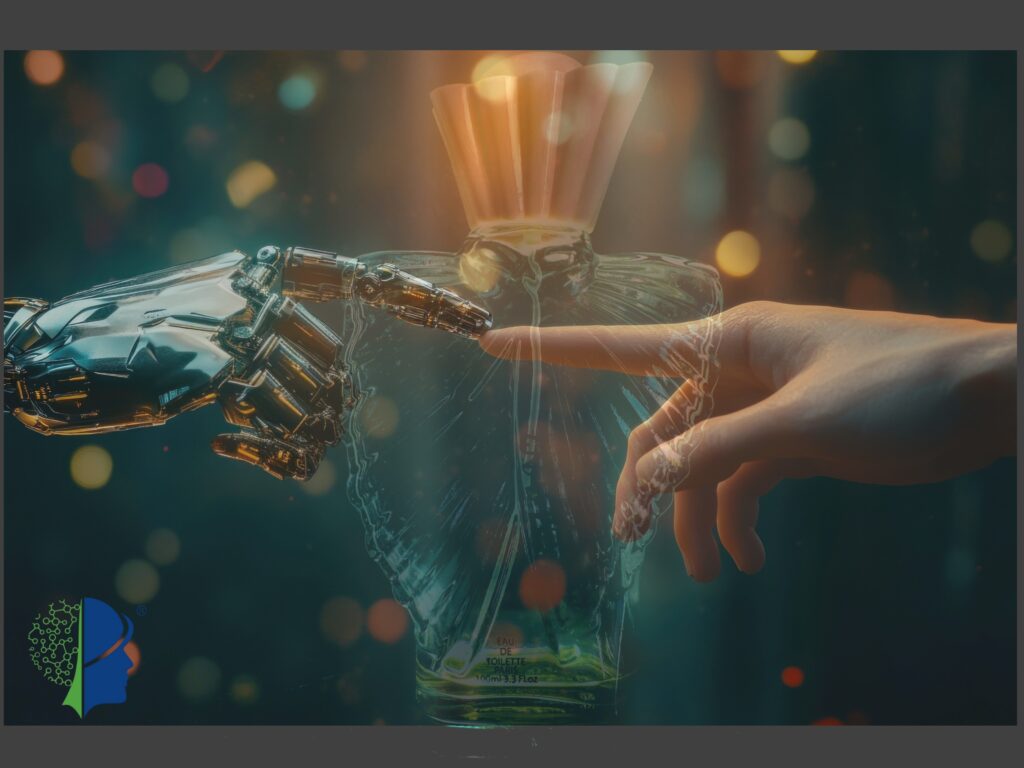In 2006, the Dutch Supreme Court delivered a landmark ruling regarding the copyrightability of scents, declaring that smells could qualify as protected subject matter under copyright laws. The case revolved around Lancôme suing Kecofa for its perfume, Tresor. The court used a compelling analogy: just as the content of a book is protected by copyright rather than the paper it is printed on, the scent of a perfume could be copyrighted, distinct from its recipe or liquid form.
Ironically, this decision contrasted sharply with a ruling made just three days earlier by the French Supreme Court, which denied Dior’s Dune similar protection. The French court viewed perfumers as skilled craftsmen akin to carpenters, not as creative artists deserving of copyright protection.
These differing perspectives highlight the inherent complexities in protecting intangible creations like scents. Now, as artificial intelligence continues to advance, the perfume industry faces a new wave of challenges. AI’s ability to analyze, replicate, and even design fragrances raises critical questions: Can AI-generated scents claim copyright? If so, who holds that right—the creator of the algorithm or the AI itself?
In this article, we explore the perfume industry’s practices, the evolving legal landscape surrounding the copyrightability of scents, and how AI is fundamentally reshaping both the creative and legal dimensions of the fragrance world.
As a general definition, perfume is a fragrant liquid made from essential oils, water, and alcohol and is primarily used to create a pleasant scent on the body. However, as an olfactory art, it would be termed into distinct definitions such as chemical, cultural, philosophical or fashionable and luxury definition.
- A combination of natural and synthetic aromatic composites, such as oils, resins, and extracts, dissolved in alcohol used to produce a pleasing scent is a chemical definition of perfume.
- A cosmetic product designed to enhance an individual’s scent, often linked to identity, luxury, and culture, with a long history of use in various rituals and practices, is linked to the cultural definition.
- Philosophical definition means the art of blending scents to evoke emotions, memories, or an aesthetic experience, considered a form of olfactory expression.
- Lastly, from a fashion or luxury point of view, perfume is a high-end product, often associated with exclusivity and branding, created to symbolize personal elegance and sophistication.
The Making of Perfume
There are no general rules or guidelines for making perfume. It may be developed by an individual under an experiment or by luxury brands under creations by fragrance agencies. This process highlights both the artistic and technical aspects of creating a perfume, reflecting how it combines creativity and industrial know-how. The outline for perfume creation by luxury brands is as follows –
- Concept development: A luxury band/fashion house provides a brief to a perfumer (i.e. nose). This brief could be poetic or pragmatic. The perfumer then interprets the brief and forms a creative concept of what the fragrance should symbolize. This step involves artistic thinking and imagination.
- Ingredient Selection: The perfumer then selects various ingredients to create the scent. This includes amalgamating natural extractions and synthetic compounds. Using computer software, the perfumer composes a formula that represents the olfactory impression. At this stage, the formula narrates the proportions of each ingredient.
- Sample Production and Refinement: The formula is sent to a laboratory where it takes the shape of the fragrance, called “Juice”. This juice is evaluated by the perfumer. Refinement refers to minor twerks and adjustments till they align with the expectations.
- Selection process and finalization: upon successful extracts, several examples are sent to the luxury brand for selection and further development. The finalized product comes out with a collaboration with the luxury brand, that ensures that the product aligns with the vision and desires of the house.
- Product launching: The luxury brand is also inclined to nurture the designing and advertising strategies in launching the finalized product. Attention is given to designing bottles and packaging.
Opponents and Proponents of Perfume Protection
The debate around protecting perfumes under copyright law brings out strong arguments from both sides. Opponents believe that making perfumes is more of a technical process than an artistic one, saying it’s based on formulas rather than creativity. On the other hand, supporters argue that creating a fragrance involves personal expression, just like painting or composing music.
One big concern from opponents is that perfumes don’t have a fixed form. Their scent changes over time and can vary depending on the person wearing them, which makes it hard to meet the legal requirement for something to be “fixed” to qualify for copyright protection. Supporters, however, believe the law should evolve to include scents as a creative work, just like it has adapted to protect other non-traditional forms of art.
Opponents also point out that copyright usually protects things we can see or hear, like books or music, and argue that it’s not designed to cover smells. Supporters disagree and suggest the law should grow to include scents in today’s world of innovation. Another argument against protecting perfumes is that it’s hard to prove whether a scent is truly original because people generally have a limited ability to analyze smells. Supporters respond by saying that experts in the field, often referred to as “persons skilled in the art,” could help solve this issue by assessing originality.
This debate shows how tricky it can be to define creativity and protect it in areas like perfumes, where traditional rules don’t always fit.
Olfactory Art and Scent
Museums around the world are increasingly embracing olfactory art to create immersive experiences that go beyond traditional visual engagement. For example, Koo Jeong A’s Before the Rain installation at the Dia Art Foundation features a scent crafted by perfumer Bruno Jovanovic, evoking the atmosphere of an Asian city on the verge of a thunderstorm.
Similarly, Haegue Yang’s Series of Vulnerable Arrangements at the New Museum in New York combines scent atomizers with Venetian blinds and fans, offering a multi-sensory exploration of space and emotion.
Another notable example is Peter De Cupere’s Olfactory Tree, which invites audiences to connect with the essence of nature within an urban gallery setting. This life-sized latex sculpture exudes forest scents, bridging the gap between the natural and the artificial in a uniquely engaging way.
These installations demonstrate how scent is being used as a powerful tool to enrich artistic experiences and challenge the boundaries of traditional art forms.
AI Digitization and the Parfum
To understand how modern technology is reshaping the fragrance industry, we must look beyond traditional debates and consider the transformative role of artificial intelligence. As AI continues to revolutionize industries globally, its impact on scent digitization and olfactory art is becoming increasingly profound. The recent advancements in AI and scent digitization have reinstalled the debate on the copyrightability of olfactory art in an attempt to reshape the fragrance industry.
Startups like Osmo.ai have already started developing strides in the mission of digitizing scents. The company is engaged in representing scents in digital form by using a Graph Neural Network (GNN) to anticipate the smell of a molecule from its structure. The brains behind this startup company is the team working at Google Research on Odor mapping.
GNN technology is based on the Principal Odor Map (POM) model that predicts Odor profiles of molecules from their structural properties. The team used a specific type of neural network called a Message Passing Neural Network (MPNN), which works by processing molecules as graphs, with atoms as nodes and bonds as connections. The POM interprets scent molecules through a high-dimensional perceptual map, matching the visual and auditory data categorized. This AI-driven model achieves human-level accuracy in interpreting novel scent profiles. By linking scent characteristics directly to molecular structures, the POM opens new possibilities for virtual scent environments and personalized scent creations. This will allow or ignite the desire to design fragrances tailored to the brands’ identity and experience. This process is setting up the podium for an active exploration of olfactory art and challenging the existing boundaries in copyrighting fragrance.
They trained their model using a database of about 5000 molecules, each with multiple Odor descriptions. In the test with 400 new odorants, the model predictions matched well with human ratings. It not only predicted Odors but also performed well in various olfactory tasks, indicating its adaptability. It helped in creating visual representations showing how different Odors relate to each other in terms of perception. The model successfully maintained the relationship between different smells, which is crucial for understanding how we categorize and differentiate Odors.
The digitization of scents will have a turnaround effect in all industries, potentially those, where scent plays an instrumental role in delivering up the expectations driven out from consumer expectations. As this digitization advances, the debate on the copyrightability of perfume is intensifying. As scents can now be described with precision and repeatability, it would strengthen the argument that perfumes could qualify for intellectual property rights. Proponents could argue that this could meet the copyright’s fixation requirements. Digitization introduces a new framework for assessing a fragrance’s originality, potentially addressing legal challenges related to scent analysis. With the help of AI, perfumes can be crafted with creative olfactory expressions and categorized by digital models could pave the way for recognizing perfumes as artistic expressions deserving of copyright. This paradigm shift may encourage innovation within the fragrance industry, prompting brands to balance traditional craftsmanship with emerging technologies to secure their creations’ value in the digital age.
Conclusion
The intersection of AI-driven innovation and scent digitization is redefining the fragrance industry and reshaping the role of olfactory art in consumer goods. Tools like the Principal Odor Map (POM) are unlocking new creative possibilities, allowing for unprecedented precision in designing and personalizing fragrances. These advancements also challenge the traditional view of perfumes as purely ephemeral products, bolstering the case for their recognition as intellectual property.
Beyond the perfume industry, the impact of olfactory digitization will be felt across various consumer goods industries, including alcohol, toiletries like washing powders and disinfectants. These sectors rely heavily on scent to influence consumer behaviour, enhance product appeal, and even shape brand identity. With AI tools able to generate and refine scent profiles, manufacturers can create products that evoke specific emotional responses or align with particular cultural trends. As such, the role of olfactory art extends far beyond luxury goods, becoming a core component of everyday products. This convergence of AI technology and olfactory science will redefine both the creative and legal frameworks surrounding scent. It also opens up new possibilities for innovation, consumer experience, and the protection of olfactory creations in the digital age.
Author – Dixit PARAKH
Sources
- Copyright in the Courts: Perfume as Artistic Expression? By Prof. Kamiel Koelman, WIPO Magazine (2006).
- Copyright and perfume: Nose, Intellect and Industry. By Antoon Quaedvlieg, Radboud University Nijmegen.
- HR, June 16, 2006, LJN AU8940, Kecofa/Lancôme.
- CdC, Arrêt No.1006, June 13, 2006, Nejla X c. Soc. Haarmann & Reimer.
- Scents & Sensibility. By – Barbara Pollack, < https://www.artnews.com/art-news/news/scents-sensibility-381/>
- A Principal Odor map unifies diverse tasks in Olfactory Perception. By Brian K. Lee, Emily J. Mayhew, Benjamin Sanchez-Lengeling, Jennifer N. Wei, Wesley W. Qian, Kelsie A. Little, Matthew Andres, Britney B. Nguyen, Theresa Moloy, Jake Yasonik, Jane K. Parker, Richard C. Gerkin, Joel D. Mainland, Alexander B. Wiltschko
- Osmo.ai/About
- https://www.perfumerflavorist.com/news/fragrance/news/22671188/google-spinoff-osmo-develops-ai-to-create-aroma-molecules-for-fragrances



